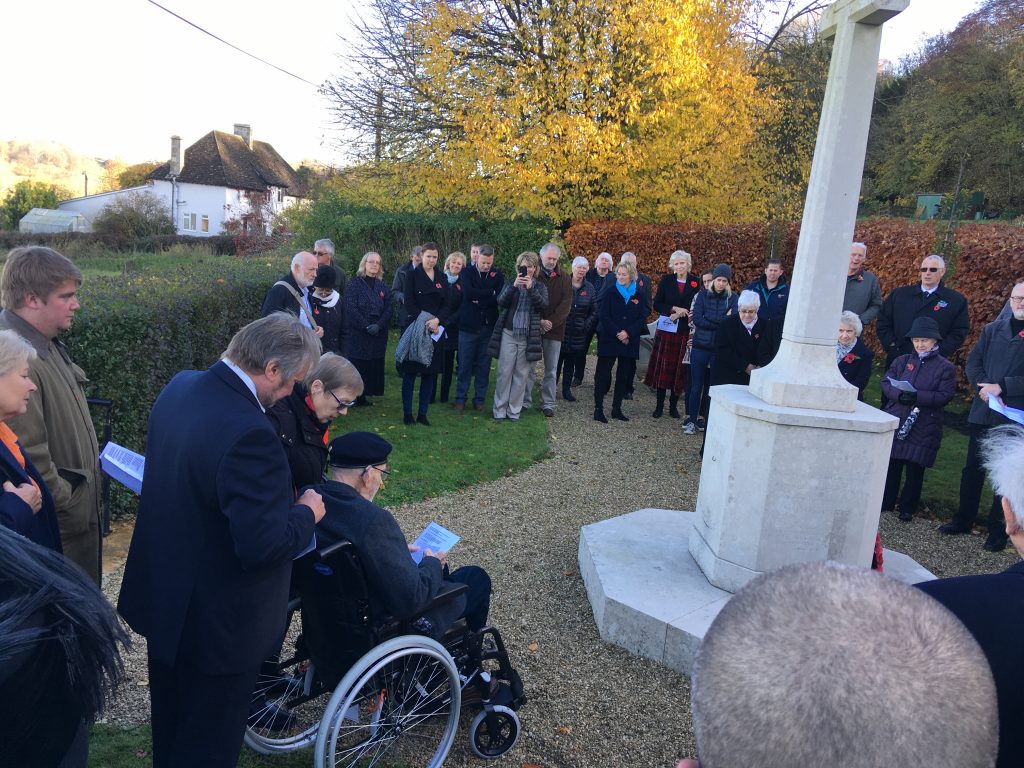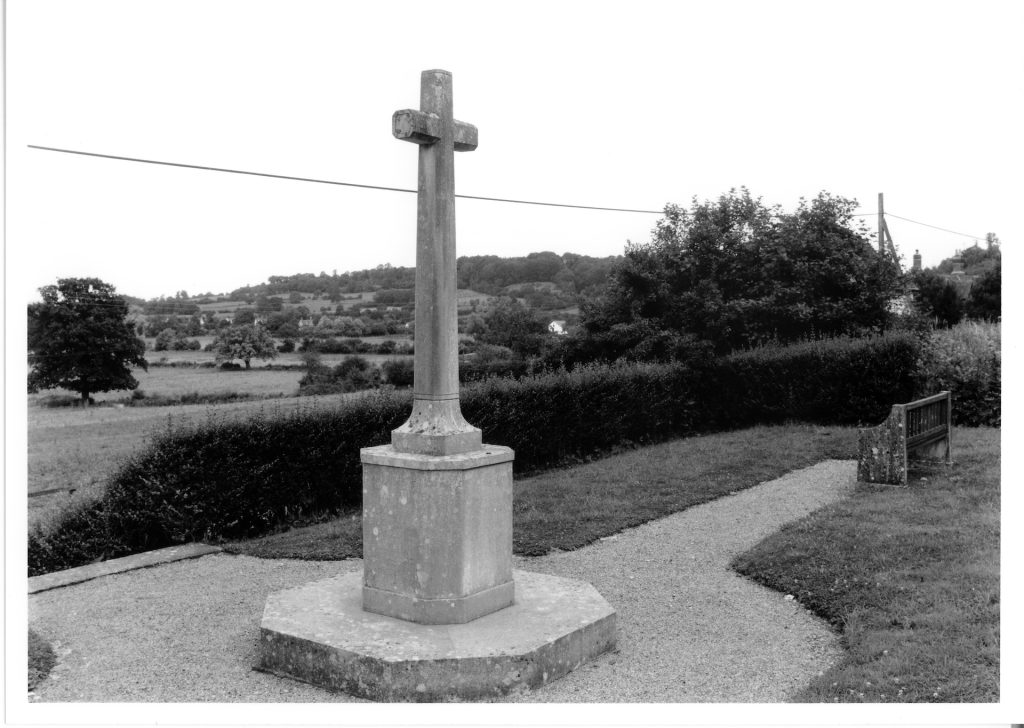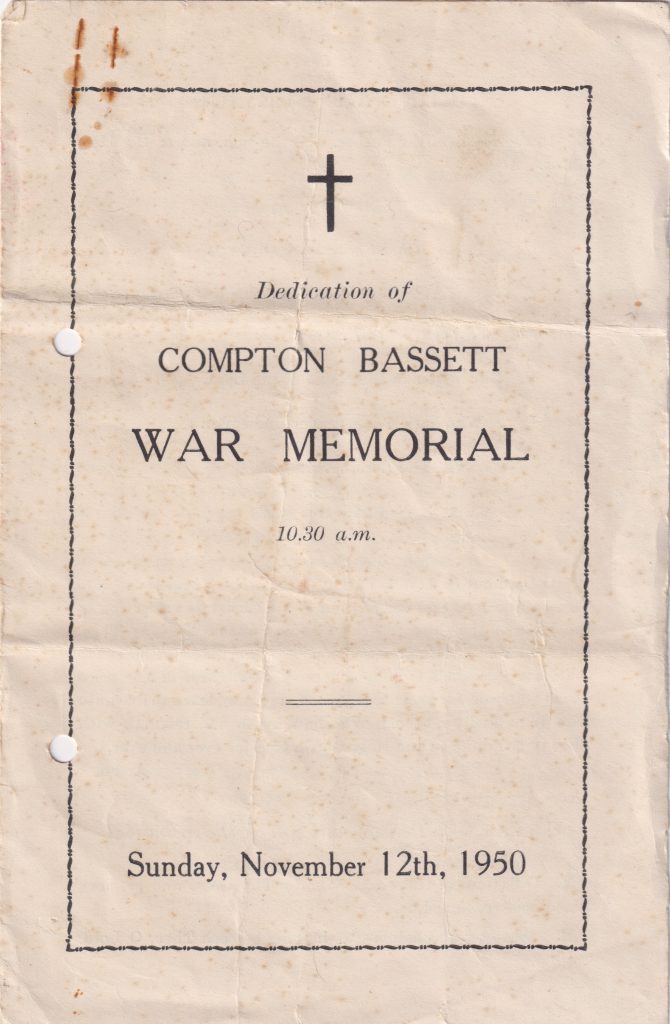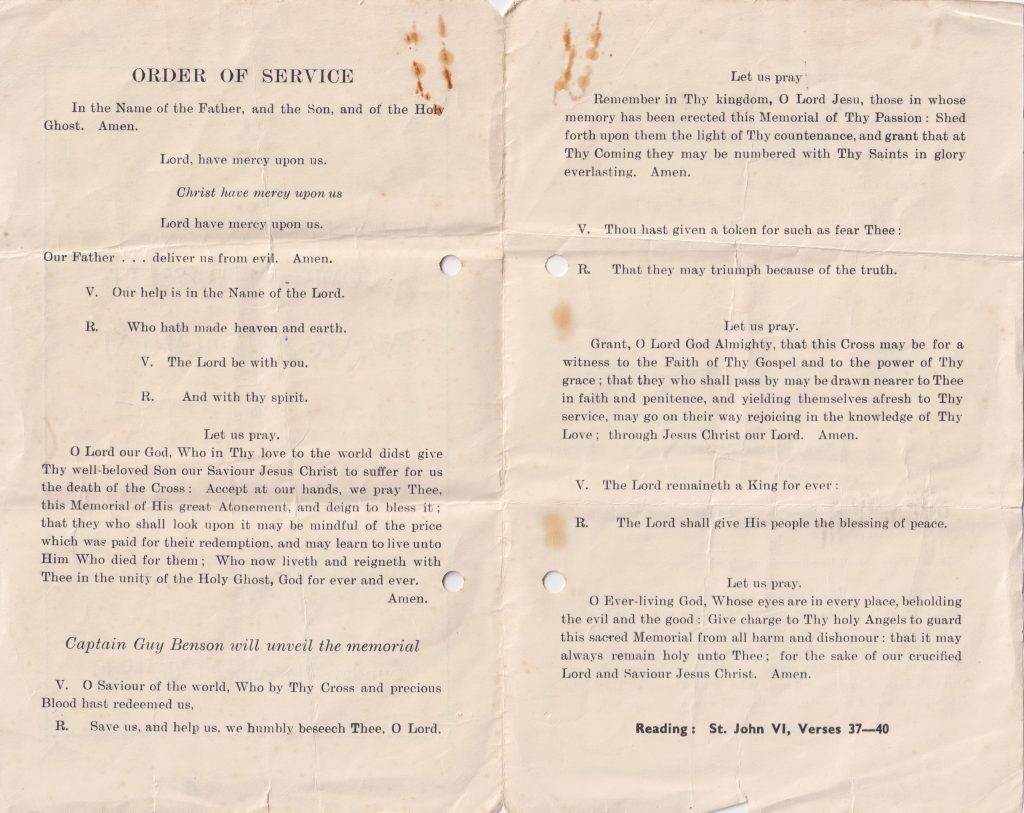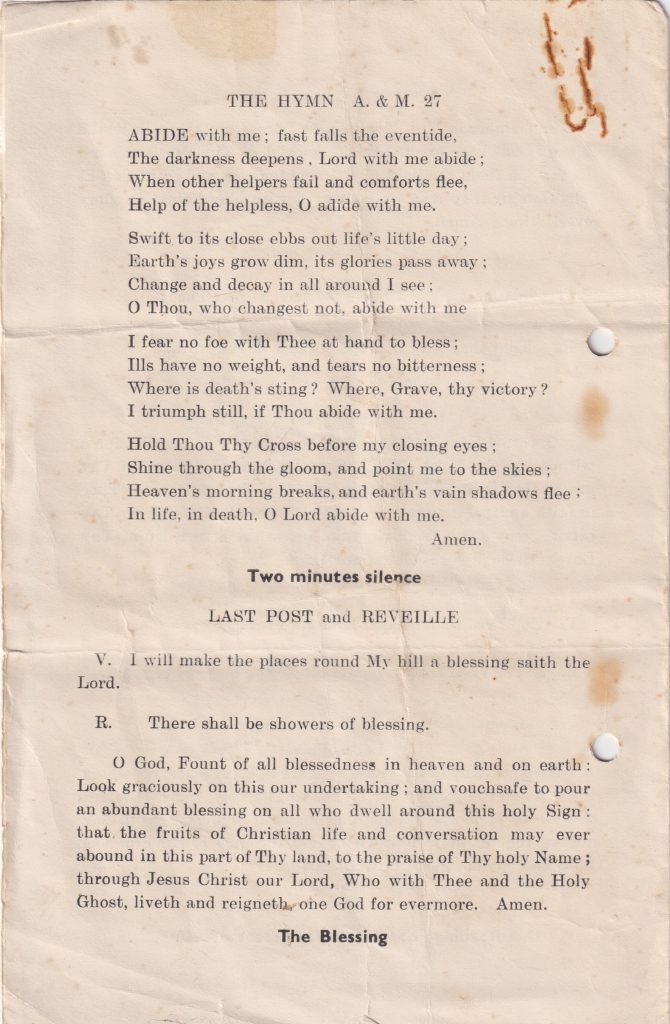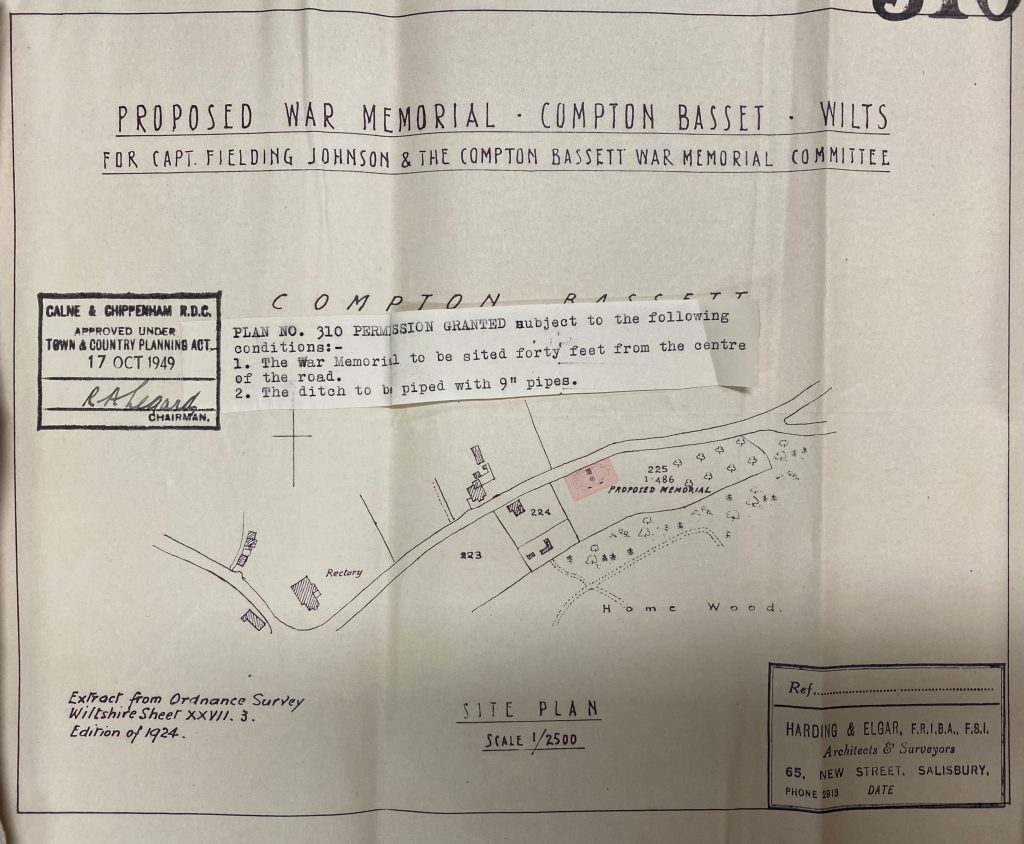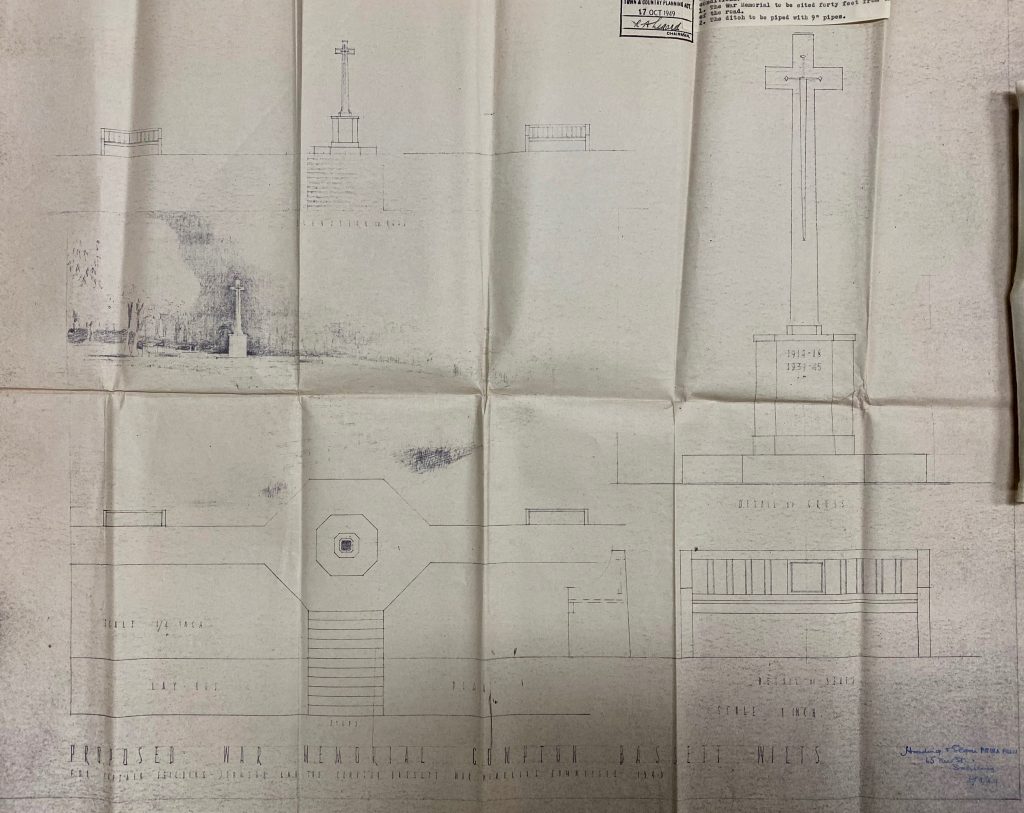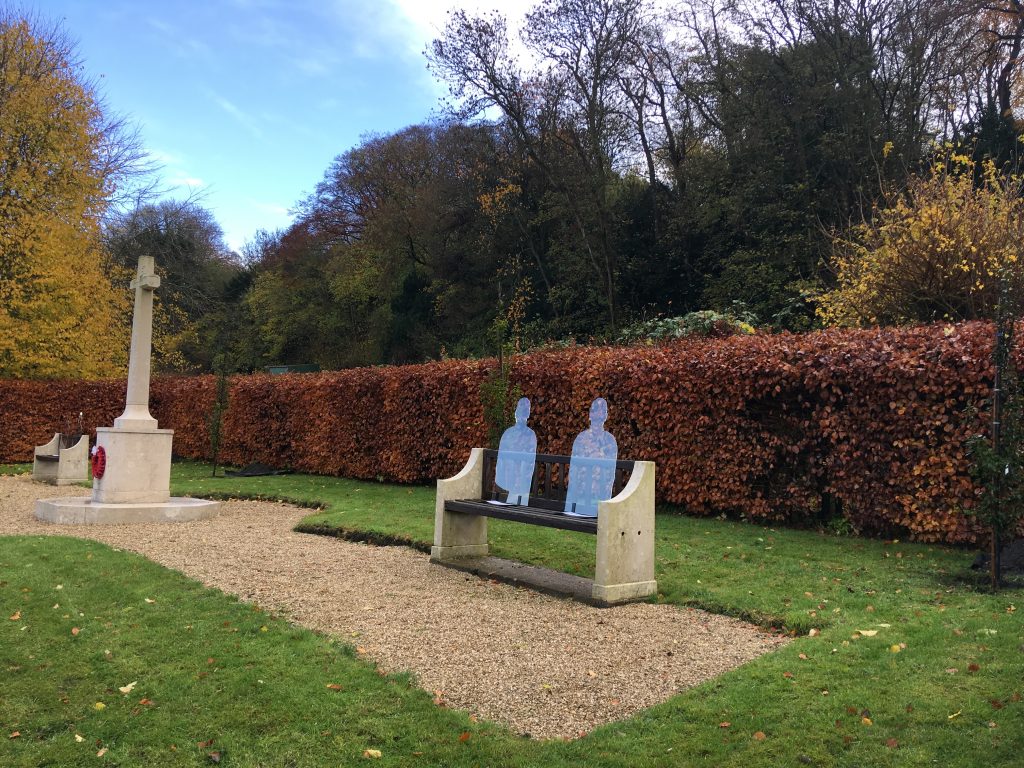In 1948 Captain Fielding-Johnson and Captain Guy Benson set up a village planning committee for the purpose of erecting the memorial. Villagers had been asking parish councillors whether “they were going to do anything about a war memorial” and so it was decided that a meeting of the village should be called first. A fund was then set up to attract contributions from the village but the greater part was donated by the two captains.

Captain Guy Benson opening the new village hall in May 1955.
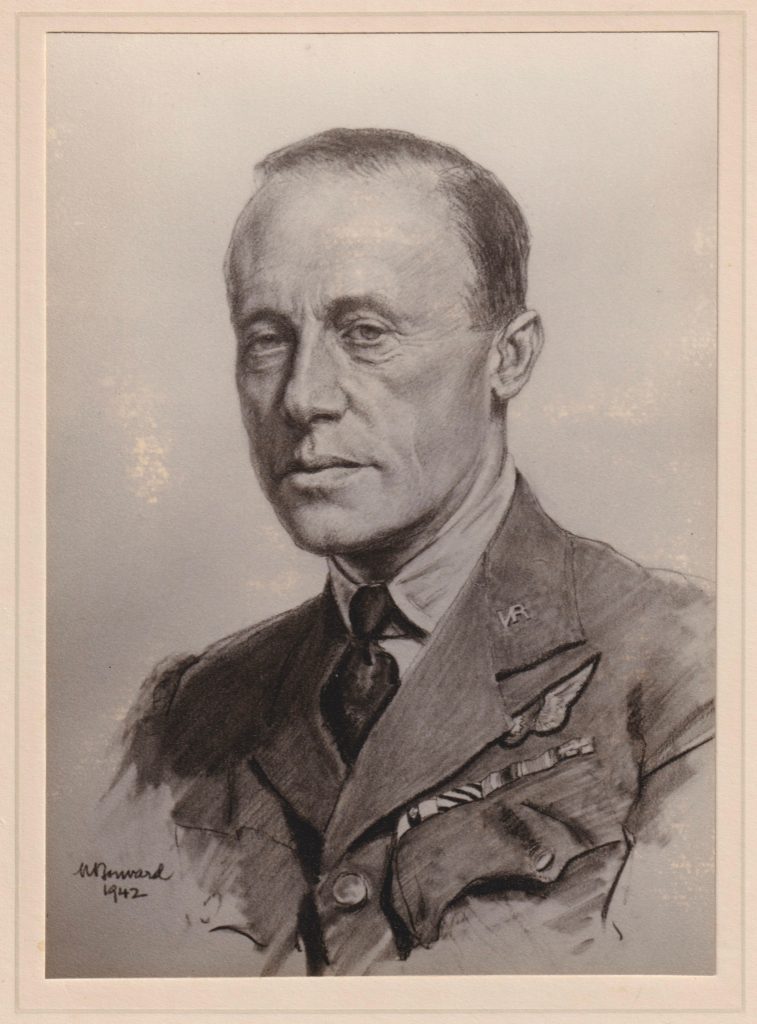
Captain William Fielding-Johnson at the time of his DFC award in 1942
Captain Fielding-Johnson lost his only son Hugh Henry Fielding-Johnson and step-son Cecil Diccon Earle in the Second World War and the verse inscribed on the pedestal panel at the rear of the memorial is taken from a sonnet entitled ‘Say Not That Beauty’ composed by English poet Robin Flower:
Not with the earthly eye or fleshly ear,
But lifted high above mortality,
We see at last the eternal hills,
and hear the sighing of the universal sea;
And kneeling breathless in that holy place
We know immortal beauty face to face.
At 10.30am on Sunday 12th November 1950, Captain Guy Benson unveiled the new war memorial during a special service of dedication conducted by Reverend Vernon Thomas and held at the site to commemorate those soldiers who had died during both world wars.
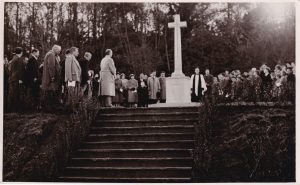


An article written by Jack Watkins for the War Memorials Trust Bulletin in 2004 describes how the building of the memorial came to fruition:
‘There may be grander War Memorials than the stone cross in the village of Compton Bassett in Wiltshire, but few can occupy a more evocative setting. Beyond the narrow lane at the foot of the steps leading up to it, the ground falls away, amidst the trees and hedgerows, to rich green meadows grazed by herds of dairy cows. It is the sort of ‘Forever England’ landscape evoked by war poets.
“It is a wonderful view and a nice place to come and think your thoughts, even if some of them are painful ones”, reflects Alan Lewis, a veteran of the D-Day landings at Arrowmanches. He stands on the steps with his friend, Les Smith, two men steeped in the village and its dairy-farming traditions.
While Alan had three friends killed at Arrowmanches, both he and Les knew some of those commemorated on the cross. Moments later, up rolls Jim Taylor; like the other two, he was present at the memorial’s unveiling in 1950. Today, he carries a photograph of the ceremony.
It was two local military men, Captains Benson and Fielding-Johnson who instigated the building of the memorial. Jim has some wry memories of the latter. “He wouldn’t put money into it unless the villagers got involved first. He had a little rubber dinghy set up and, for every sixpence (2.5 new pence) we threw in, he’d double it”.
Just over 50 years later, in 2003, locals of a community consisting of only 100 houses and a population of 200 had to dip into their pockets once again. Lichen and weeds were crowding out the inscriptions on the stonework. After being awarded Grade II listed status and a grant offer from English Heritage of 50 per cent towards the total cost of repairs – £1,650 – matching funds were required. “We sent out a letter to everyone in the village, saying that the cross has been here for 50 years and this was a chance to contribute to maintaining it”, explains Serena Henly, chair of the parish council. “So much was given that we have even been able to set aside a bank account for the memorial’s future upkeep”.
There are over 50,000 war memorials standing at the heart of virtually every community throughout Britain which represent a very emotional response by bereaved families.
The Compton Bassett memorial is constructed from Portland stone and is Grade II listed, having been judged in 2002 to be an uncommon example, meriting its status of special architectural and historic interest. The memorial stands close to the site of the old village hall and is likely to have been built by Messrs Blackfords of Calne, as Capt Fielding-Johnson habitually used that firm for building work.
It was designed in 1949 by architects Harding & Elgar of Salisbury after Sir Reginald Blomfield’s Cross of Sacrifice design in 1918, being a plain cross with a bronze longsword, blade pointed downward, on the front.
“What I wanted to do in designing this Cross was to make it as abstract and impersonal as I could, to free it from any association of any particular style, and, above all, to keep clear of any sentimentalism of the Gothic. This was a man’s war far too terrible for any fripperies, and I hoped to get within range of the infinite in this symbol…” Reginald Blomfield.
The one at Compton Bassett differs slightly, in that it has a sword carved as a recessed shape, rather than having a sculpture fixed to the face. It is situated on an octagonal plinth, at the top of a flight of twelve steps which run up between the hedge from the street. The memorial stands amid a gravelled area containing two benches and surrounded by lawn, which is all enclosed by a hedge.
The memorial and garden were renovated in 2017 with the help of a grant from the War Memorials Trust.

LAURIE WAITE
Sources
The National Archives
‘The Great War: Calne District Soldiers’ by Richard Broadhead
Commonwealth War Graves Commission
War Diaries of various regiments.


